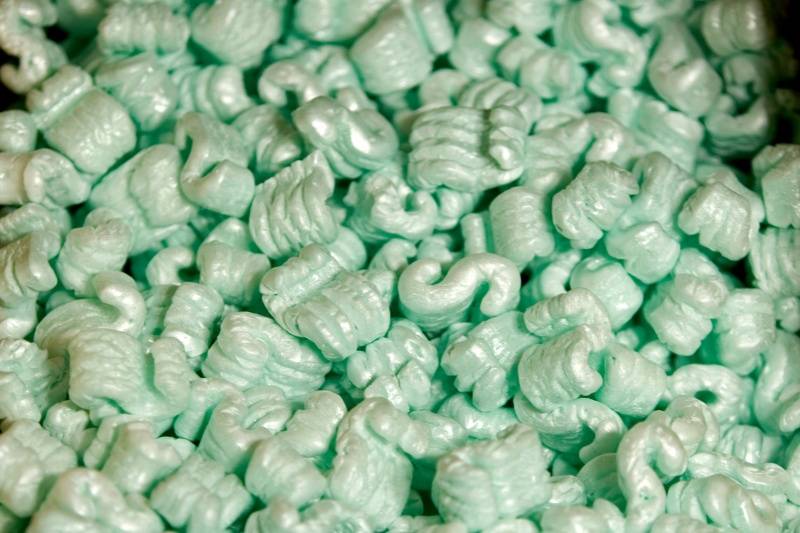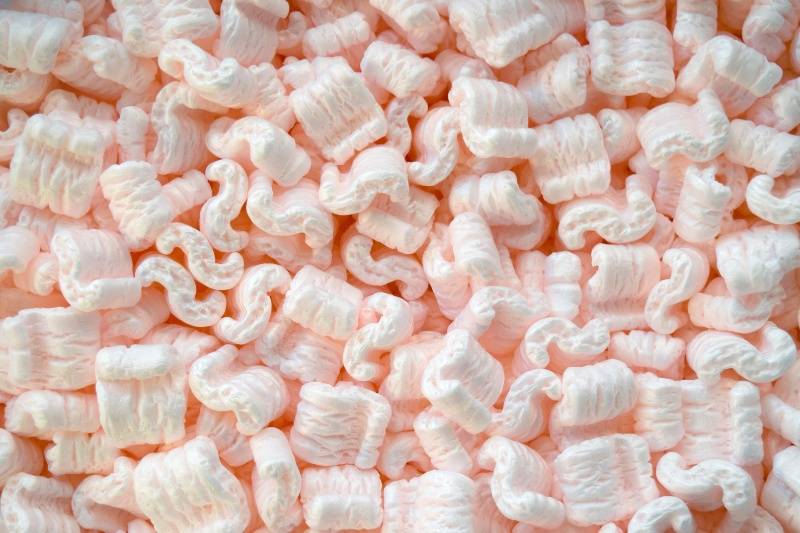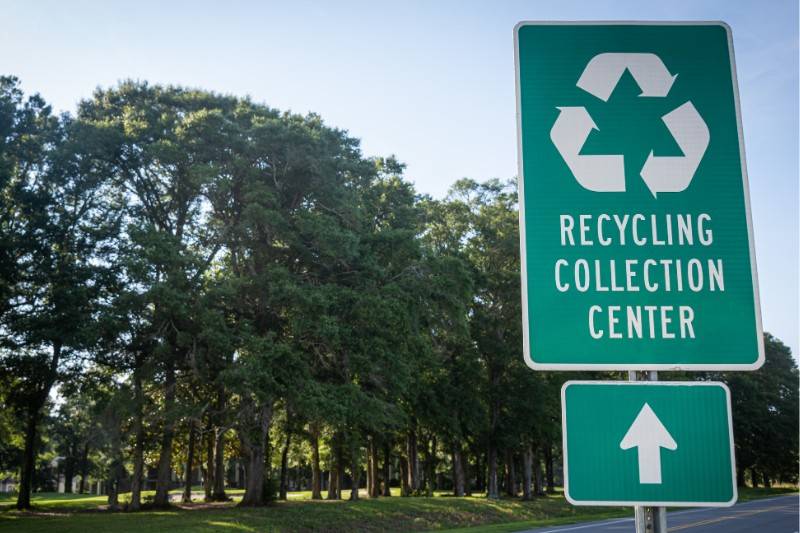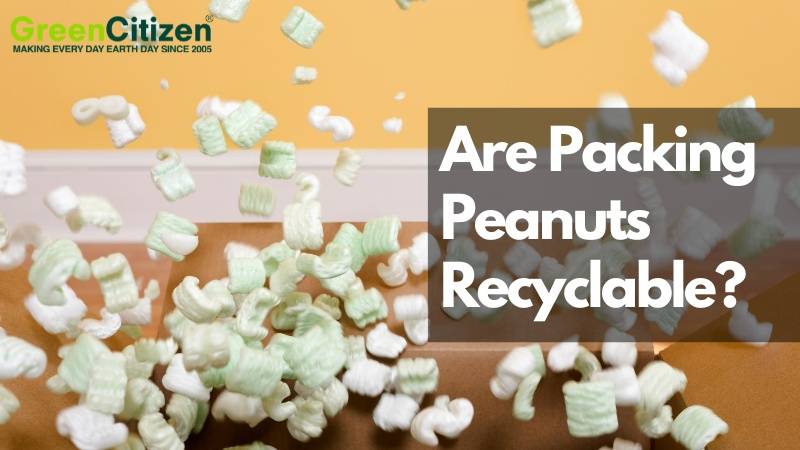Ever ripped open a package only to be greeted by those tiny, squishy peanuts? Yep, those are packing peanuts—also known as foam peanuts or loose fill. I remember my first encounter with them as a kid; I thought they were some weird kind of snack (spoiler: they aren’t).
Packing peanuts are made from expanded polystyrene (EPS) or biodegradable materials like cornstarch. Whether they’re recyclable depends on the type you have. Packing peanuts need a special recycling facility—many curbside programs don’t accept them.
On the flip side, the biodegradable ones can dissolve in water or be composted, making them much easier to dispose of responsibly.
We’ll learn about them in detail in this blog.
Key Takeaways
- Not all packing peanuts are recyclable—know the type and your recycling center policies before you dispose of them.
- Green packing peanuts are eco-friendlier as they are made of recycled materials, while white and pink ones often require specialized recycling. Yellow or beige peanuts are biodegradable.
- Always check with local recycling centers or takeback programs for proper disposal of packing peanuts.
Can You Recycle Packing Peanuts?
Despite what you might have heard, packing peanuts is recyclable—though it depends on the type and what kind of recycling facility you have in your locality. Most traditional packing peanuts are made from expanded polystyrene (EPS), also known as #6 plastic. EPS is lightweight, yet sturdy, and often used for its shock-absorbing qualities.
However, its chemical makeup means it’s not biodegradable, which is why many think it’s non-recyclable.
Here’s the truth: while your curbside recycling program might not accept EPS peanuts, many specialized recycling facilities do. These facilities have the technology to break down EPS into raw materials that can be reused. They do it the same way they recycle styrofoam.
Some places even accept these peanuts for reuse in future packaging.
It’s essential to check with your local recycling center to see if they accept EPS peanuts. If not, some local shipping stores or specific drop-off locations might take them off your hands. Understanding what your packing peanuts are made of is the first step to recycling them properly, and ensuring they don’t end up in a landfill.
Challenges of Recycling Packing Peanuts

Recycling packaging materials like packing peanuts isn’t as simple as tossing them in the blue bin. This is true for bubble wraps, too, another popular option for packing fragile items.
The reality is that polystyrene, the material most of these peanuts are made from, faces several hurdles when it comes to recycling.
Low Recycling Rates
One significant challenge is the low recycling rate. Why? Many curbside recycling programs don’t accept polystyrene due to its bulky nature. It takes up a lot of space but weighs very little, making it costly to collect and transport to specialized facilities.
Contamination
Another issue is contamination. Packing peanuts are often tainted with food residues or mixed with other materials, making them tough to recycle. When polystyrene is dirty, it requires extra cleaning before it can be processed, adding time and expense.
Cost Effectiveness
Then there’s the cost factor. Recycling polystyrene is more expensive than producing new material. This higher cost discourages recycling programs from accepting it.
They simply don’t see the financial benefit.
While recycling packing peanuts is technically possible, the process is difficult. These challenges contribute to the low rates of recycling and the environmental impact of polystyrene, particularly in landfills and waterways.
Types of Packing Peanuts and Their Recyclability
Not all packing material is created equal. Packing peanuts come in different colors, each with its own material composition, recyclability, and biodegradability.
Let’s break down the four most common types:
- White or Off-White Packing Peanuts
- Green Packing Peanuts
- Pink Packing Peanuts
- Yellow or Beige Packing Peanuts
White or Off-White Packing Peanuts

These are the most common packing peanuts you’ll encounter. Made from expanded polystyrene (EPS), they’re lightweight, durable, and excellent at cushioning items during shipping. However, their recyclability is tricky.
Many curbside recycling programs don’t accept them due to their bulky nature, but specialized facilities can recycle them into new products like picture frames or insulation.
Unfortunately, they’re not biodegradable, so if they end up in a landfill, they can take hundreds of years to break down.
Green Packing Peanuts

Green packing peanuts are a bit friendlier to the environment. Made from a blend of recycled polystyrene and other recycled materials, they offer the same cushioning benefits as their white counterparts but with a smaller environmental footprint.
They’re often accepted at recycling centers that handle EPS, though, like the white ones, they’re not biodegradable.
The green color is a signal that they contain at least 70% recycled content, making them a better choice for those concerned about sustainability.
Pink Packing Peanuts

Pink packing peanuts are designed with a specific purpose in mind—antistatic protection. You’ll most likely see them coming with the electronics that you’ve ordered.
They’re made from polystyrene, just like the white and green ones, but they include an antistatic agent to protect electronic components during shipping.
While their recyclability is similar to other foam packing peanuts, their specialized use means they’re often not recycled as frequently. And like their white and green cousins, they’re not biodegradable, which means they stick around for a long time if not properly recycled.
Yellow or Beige Packing Peanuts

Yellow or beige packing peanuts are the outliers here. They’re typically made from biodegradable materials like cornstarch, which means they can dissolve in water or break down naturally over time.
These peanuts are compostable and can even be tossed in your garden.
Unlike the polystyrene types, they don’t require specialized recycling facilities. However, because they dissolve easily, they’re not as durable as their polystyrene counterparts and are best suited for lightweight, non-fragile items.
Where to Recycle Packing Peanuts?

Finding a place to recycle packing peanuts can be tricky, but it’s not impossible. While most curbside programs won’t take them, there are still some options available.
Local Recycling Facility
Your first stop should be your local recycling facility. However, don’t just show up with a bag of packing peanuts—give them a call first. As we’ve discussed, many recycling centers don’t accept them due to the challenges involved, like their bulky nature and the cost of processing.
Takeback Programs
If your local facility isn’t an option, consider takeback programs. Many parcel services, such as UPS, accept packing peanuts for reuse. These programs help keep the peanuts in circulation, reducing the need for new materials. Just make sure the peanuts are clean and free of any contaminants before you drop them off.
GreenCitizen
Finally, if you’re in the San Francisco Bay Area, GreenCitizen is a fantastic option.
We accept packing peanuts for free, provided they’re clean. At GreenCitizen, the peanuts are fed through the Plastic Foam Densifier (PFD) XT200, where they’re shredded, heated, and pressurized into a paste. This paste is then formed into dense ingots that can be used in products like picture frames and architectural crown molds.
It’s a great way to give those pesky peanuts a second life, all while helping the environment.
